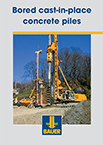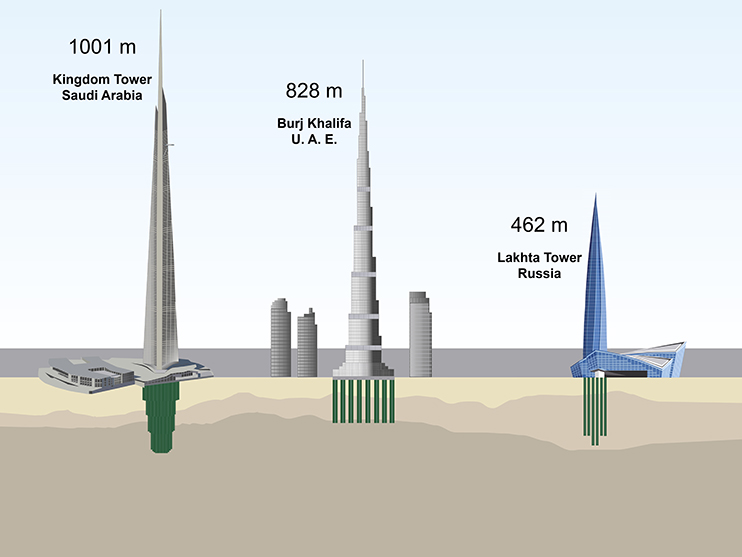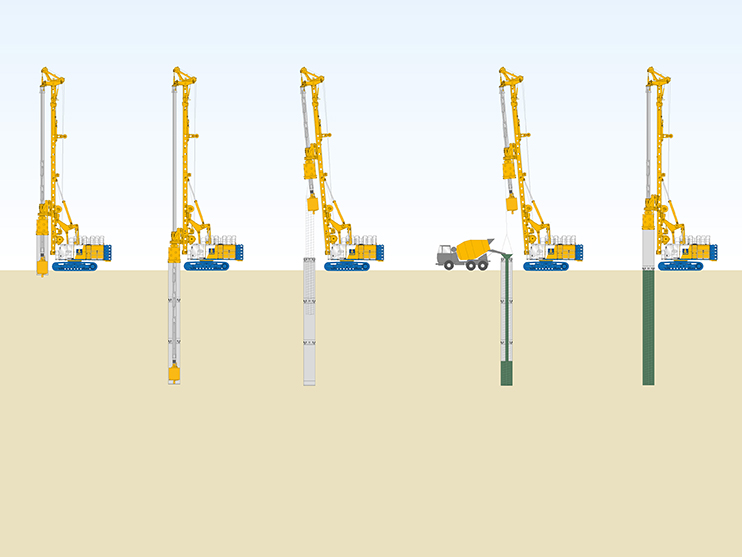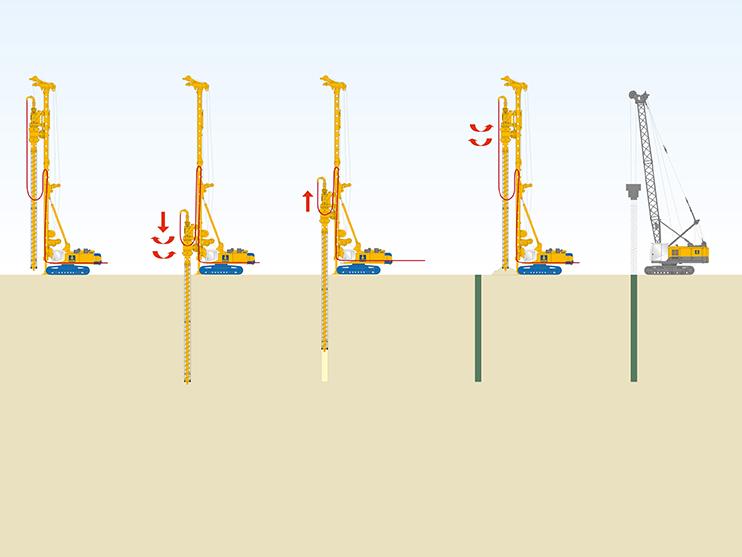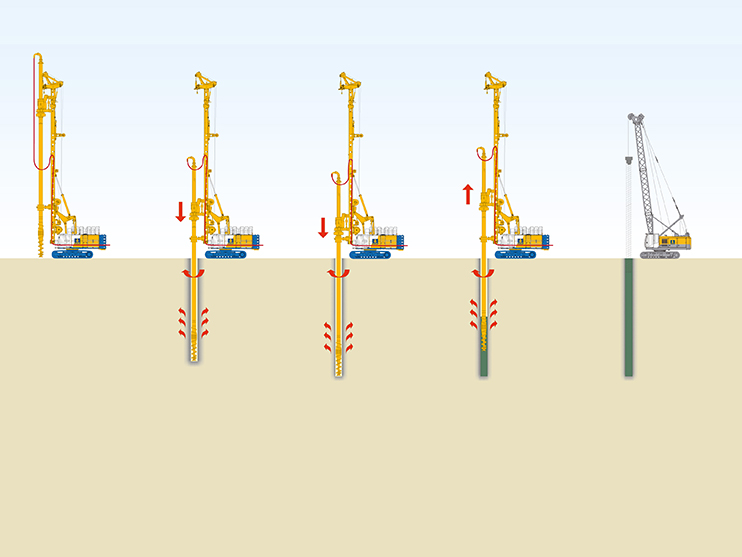Bored Piles
Bored piles are cylindrical bodies made of concrete (with or without reinforcement) which are installed in the ground by a variety of methods. They transmit high structural loads into lower, load-bearing soils. When installed in rows or in secant configuration they can form a supporting wall for an excavation pit or cut in the terrain, or block off groundwater. The length, diameter, material, shape and layout of the piles can be varied according to their intended use.
Types of Construction Method
The kelly method is used to produce uncased, partially or fully cased or slurry-supported bored piles. The soil is excavated by a drilling tool mounted at the tip of a telescopic kelly bar. When the fully cased pile technique is used, the insection of the full depth casing is simultaneous to the excavation, until the final depth is reached.
The double rotary system (DRS) links the CFA method with continuous auger to the installation of full casing. The result is a cased bore according to EN 1536, installed with a continuous flight auger. This method is particularly advantageous at high ground water levels and soil layers having a risk of uplifting which require drilling under water load with the kelly method.




